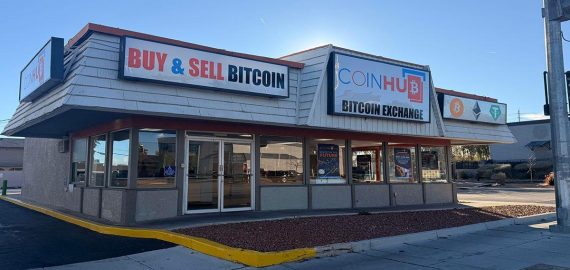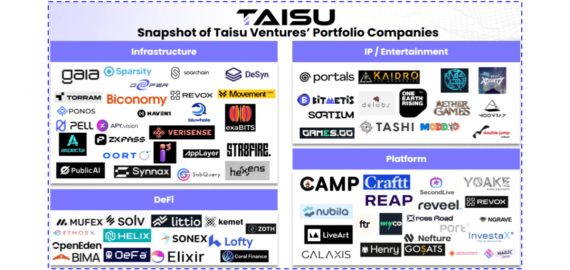The Rise of Tokenized Assets: A New Era for Real Estate, Art, and More

In Brief

One of the most thriving intersectional zones between traditional and decentralized finance – as things stand today – is occupied by real-world assets. But why are they thriving, and what does blockchain-induced decentralization have to do with it?
What are Tokenized Real World Assets?
Tokenized real-world assets are virtual investment instruments created on the blockchain, with tangible assets linked to the digital vehicle, thereby bridging the gap between traditional and digital markets. The underlying asset responsible for the virtual instrument’s value could be varied, including real estate, precious metals, art pieces, or collectibles. Their ownership is put on the chain and not on a piece of paper like the conventional legal deeds.
According to available estimates, the market for tokenized RWAs could become US$10 trillion by 2030, with a bull market tailwind fanning its growth. Even in a bear-market scenario, the market could become as big as US$3.5 trillion.
The Advantages of RWA
The growth numbers do not seem far-fetched when we put the RWA scenario in perspective.
Accessing real-world assets’ ownership through on-chain vehicles comes with several advantages, including the removal of intermediaries from the system. This shift to a blockchain-powered decentralized environment eliminates the need for traditional players such as legal firms, brokers, or banks. The transition to an intermediary-removed system brings with it several benefits. It is fast, efficient, low-cost, transparent, and more accountable, revolutionizing the way we handle asset transactions.
Echoing this sentiment, Aman Arman, Senior Marketing Executive of Planet ReFi, a platform that aims to leverage the RWA paradigm for mobilizing people around the greater cause of environmental sustainability, remarked:
“The future of tokenization looks promising, to say the least. Traded and non-traded items – tokenization has proved to be beneficial in both cases. Its benefits are multi-dimensional. It helps improve the liquidity of assets, makes fractional ownership possible, expedites the settlement time, reduces property transfer and transaction costs, and, above all, makes the process highly secure.”
Large TradFi Players Keen to Leverage RWAs
The validity of Aman Arman’s statement is evident from the large-sized traditional finance world players’ interest in tokenized RWAs.
According to a joint survey conducted by the research and advisory firm Celent and American banking giant BNY Mellon, 91% of institutional investors are interested in putting their money into tokenized assets. More encouragingly, 97% agree that tokenization could revolutionize the way we have known asset management so far.
In a recent Defiant interview on 2024 predictions, Felix Xu, the CEO & co-founder of ARPA Network, spoke to the increasing number of major financial institutions overseeing pilots exploring tokenization, “Already, an increasing number of TradFi companies like JPMorgan Chase, Goldman Sachs, BlackRock, and Fidelity are progressively recognizing the advantages of this technology,” Xu said. “While the focus has been predominantly on credit markets, there’s a growing potential for tokenization to extend its reach to other asset classes, including equities, art, automobiles, commodities, and real estate.”
US banking giant JP Morgan, for instance, has come up with a RWA tokenization platform with BlackRock as one of its key clients. This inclination of big banking players to leverage the power of tokenized RWAs is explained well by Gaurav Dubey, the CEO of TDeFi.
Elaborating on this trend, Dubey states, “In general, the tokenization of real-world assets is something that most of the big players in the traditional finance market have been keen to adopt from the crypto world for quite some time now. They have realized the inherent versatility of RWA, which can represent many physical and traditional assets, including currencies, commodities, equities, bonds, real estate properties, and more.”
JP Morgan’s tokenization application, known as the Tokenized Collateral Network, began its journey by helping convert shares of one money market fund into digital tokens for then to be next transferred to the Barclays bank as security for an OTC derivatives exchange between two companies.
Going ahead, tokenized RWAs will see further growth as solutions like JPMorgan’s TCN help unlock capital and allow it to be used as collateral in ongoing transactions. It brings efficiency by streamlining and scaling up the process of traditional settlements. The collateral can move at near-instant speed.
The Future of Tokenizing Real-World Assets
The future of tokenized real-world assets could become more promising if they manage to remove a few bottlenecks that still exist. For instance, the world of RWA needs to function under a consistent and homogeneous tokenization spectrum.
Robust frameworks are required to be put in place relating to the aspects of legality, supervisory mechanisms, and more. RWA tokenization, as a practice, would thrive when it has a robust and efficient ecosystem around it. It helps increase liquidity and movement. Finally, the challenges around cybersecurity and data and information privacy have to be addressed.
However, with institutional investors showing interest in it and big firms like JP Morgan, Barclays, BlackRock, and BNY Mellon becoming stakeholders in the system in one way or another, the RWAs are only to become bigger and better in the days to come.
Disclaimer
In line with the Trust Project guidelines, please note that the information provided on this page is not intended to be and should not be interpreted as legal, tax, investment, financial, or any other form of advice. It is important to only invest what you can afford to lose and to seek independent financial advice if you have any doubts. For further information, we suggest referring to the terms and conditions as well as the help and support pages provided by the issuer or advertiser. MetaversePost is committed to accurate, unbiased reporting, but market conditions are subject to change without notice.
About The Author
Gregory, a digital nomad hailing from Poland, is not only a financial analyst but also a valuable contributor to various online magazines. With a wealth of experience in the financial industry, his insights and expertise have earned him recognition in numerous publications. Utilising his spare time effectively, Gregory is currently dedicated to writing a book about cryptocurrency and blockchain.
More articles

Gregory, a digital nomad hailing from Poland, is not only a financial analyst but also a valuable contributor to various online magazines. With a wealth of experience in the financial industry, his insights and expertise have earned him recognition in numerous publications. Utilising his spare time effectively, Gregory is currently dedicated to writing a book about cryptocurrency and blockchain.

















































